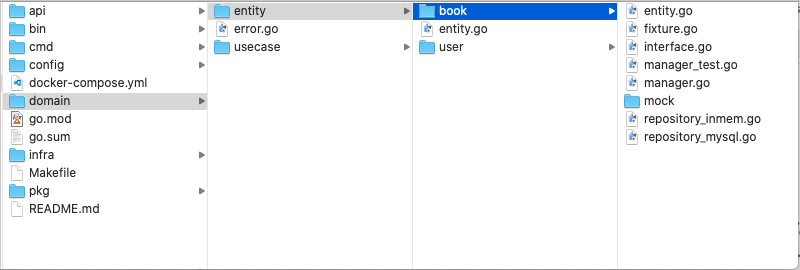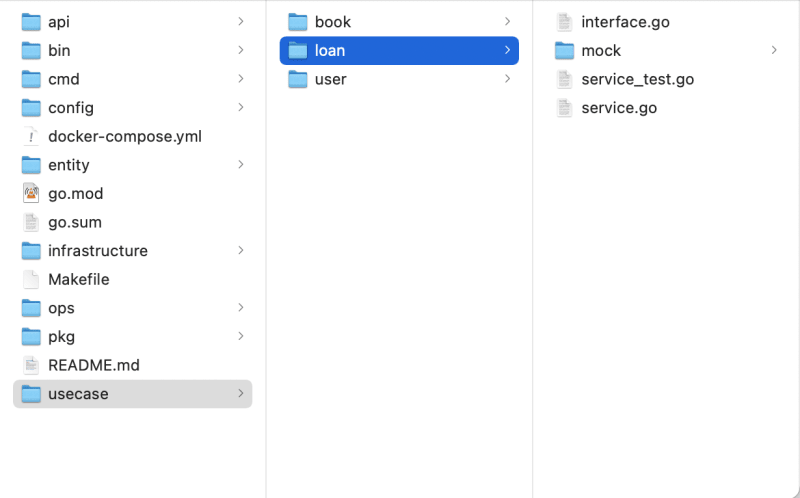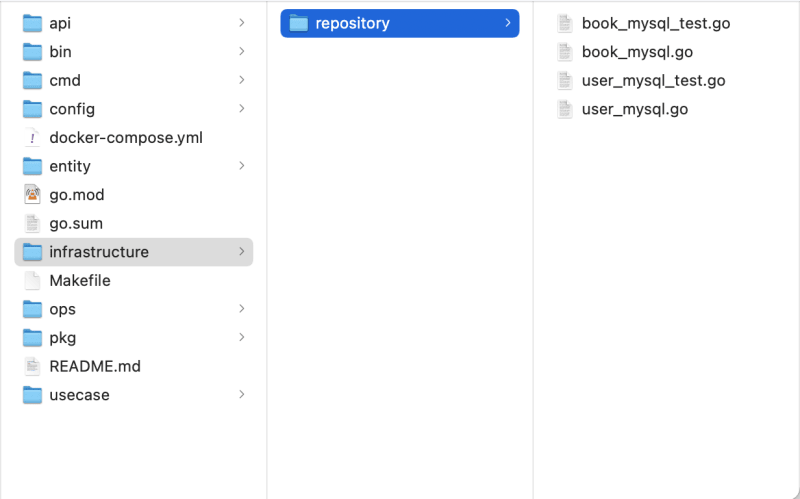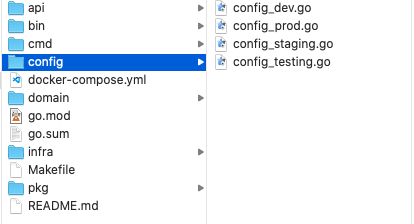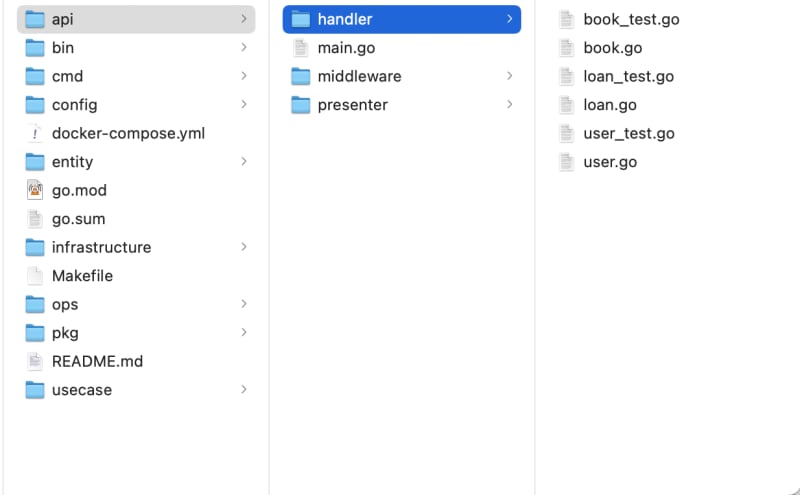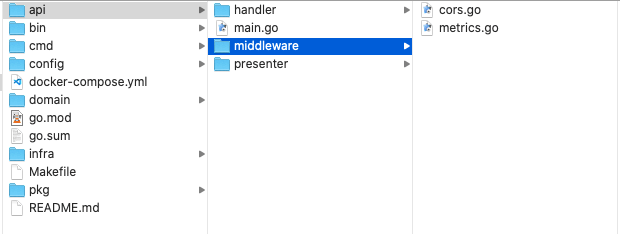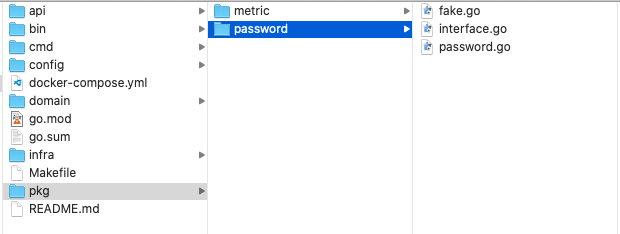UPDATE: This post is old and no longer reflects what I believe to be an ideal structure for a project. In 2023, I am using and recommending what my colleagues and I have described in this post.
In February 2018 I wrote what would become the most relevant text I have ever published: Clean Architecture using Golang. With more than 105k views, the post generated presentations at some Go and PHP events and allowed me to talk about software architecture with several people.
Using this architecture for the development of Codenation's products, we gained experience and solved problems. We wrote some posts reporting these experiences:
- Golang: using build tags to store configurations
- Continuous integration in projects using monorepo
- Monitoring a Golang application with Supervisor
- Data Migration with Golang and MongoDB
- Using Golang as a scripting language
- Creating test mocks using GoMock
- Using Prometheus to collect metrics from Golang applications
- Profiling Golang applications using pprof
- Testing APIs in Golang using apitest
After this whole experience I can say::
Choosing Clean Architecture was the best technical decision we made!
With this post, I want to share a repository with a new example implementation in Go. It is an update with improvements in the organization of codes and directories, as well as a more complete example for those who are looking to implement this architecture.
In the next topics, I explain what each directory means.
Entity layer
Let's start with the innermost layer of the architecture.
According to Uncle Bob's post:
Entities encapsulate Enterprise wide business rules. An entity can be an object with methods, or it can be a set of data structures and functions. It doesn’t matter so long as the entities could be used by many different applications in the enterprise.
The structure looked like this:
In this package we have the definition of our entities and their respective unit tests. For example, the entity user:
package entity
import (
"time"
"golang.org/x/crypto/bcrypt"
)
//User data
type User struct {
ID ID
Email string
Password string
FirstName string
LastName string
CreatedAt time.Time
UpdatedAt time.Time
Books []ID
}
//NewUser create a new user
func NewUser(email, password, firstName, lastName string) (*User, error) {
u := &User{
ID: NewID(),
Email: email,
FirstName: firstName,
LastName: lastName,
CreatedAt: time.Now(),
}
pwd, err := generatePassword(password)
if err != nil {
return nil, err
}
u.Password = pwd
err = u.Validate()
if err != nil {
return nil, ErrInvalidEntity
}
return u, nil
}
//AddBook add a book
func (u *User) AddBook(id ID) error {
_, err := u.GetBook(id)
if err == nil {
return ErrBookAlreadyBorrowed
}
u.Books = append(u.Books, id)
return nil
}
//RemoveBook remove a book
func (u *User) RemoveBook(id ID) error {
for i, j := range u.Books {
if j == id {
u.Books = append(u.Books[:i], u.Books[i+1:]...)
return nil
}
}
return ErrNotFound
}
//GetBook get a book
func (u *User) GetBook(id ID) (ID, error) {
for _, v := range u.Books {
if v == id {
return id, nil
}
}
return id, ErrNotFound
}
//Validate validate data
func (u *User) Validate() error {
if u.Email == "" || u.FirstName == "" || u.LastName == "" || u.Password == "" {
return ErrInvalidEntity
}
return nil
}
//ValidatePassword validate user password
func (u *User) ValidatePassword(p string) error {
err := bcrypt.CompareHashAndPassword([]byte(u.Password), []byte(p))
if err != nil {
return err
}
return nil
}
func generatePassword(raw string) (string, error) {
hash, err := bcrypt.GenerateFromPassword([]byte(raw), 10)
if err != nil {
return "", err
}
return string(hash), nil
}
Use Case Layer
According to Uncle Bob::
The software in this layer contains application specific business rules. It encapsulates and implements all of the use cases of the system
The structure look like this:
In packages within usecase we implement the other business rules of our product.
For example, the file usecase\loan\service.go:
package loan
import (
"github.com/eminetto/clean-architecture-go-v2/entity"
"github.com/eminetto/clean-architecture-go-v2/usecase/book"
"github.com/eminetto/clean-architecture-go-v2/usecase/user"
)
//Service loan usecase
type Service struct {
userService user.UseCase
bookService book.UseCase
}
//NewService create new use case
func NewService(u user.UseCase, b book.UseCase) *Service {
return &Service{
userService: u,
bookService: b,
}
}
//Borrow borrow a book to an user
func (s *Service) Borrow(u *entity.User, b *entity.Book) error {
u, err := s.userService.GetUser(u.ID)
if err != nil {
return err
}
b, err = s.bookService.GetBook(b.ID)
if err != nil {
return err
}
if b.Quantity <= 0 {
return entity.ErrNotEnoughBooks
}
err = u.AddBook(b.ID)
if err != nil {
return err
}
err = s.userService.UpdateUser(u)
if err != nil {
return err
}
b.Quantity--
err = s.bookService.UpdateBook(b)
if err != nil {
return err
}
return nil
}
//Return return a book
func (s *Service) Return(b *entity.Book) error {
b, err := s.bookService.GetBook(b.ID)
if err != nil {
return err
}
all, err := s.userService.ListUsers()
if err != nil {
return err
}
borrowed := false
var borrowedBy entity.ID
for _, u := range all {
_, err := u.GetBook(b.ID)
if err != nil {
continue
}
borrowed = true
borrowedBy = u.ID
break
}
if !borrowed {
return entity.ErrBookNotBorrowed
}
u, err := s.userService.GetUser(borrowedBy)
if err != nil {
return err
}
err = u.RemoveBook(b.ID)
if err != nil {
return err
}
err = s.userService.UpdateUser(u)
if err != nil {
return err
}
b.Quantity++
err = s.bookService.UpdateBook(b)
if err != nil {
return err
}
return nil
}
We also found the mocks generated by Gomock, as explained in this post. The other layers of the architecture will use this mocks during the tests.
Frameworks and Drivers layer
According to Uncle Bob:
The outermost layer is generally composed of frameworks and tools such as the Database, the Web Framework, etc.This layer is where all the details go.
For example, in the file infrastructure/repository/user_mysql.go we have the implementation of the interface Repository in MySQL. If we need to change to another database, this is where we would create the new implementation.
Interface Adapters layer
The codes in this layer adapt and convert the data to the format used by the entities and use cases for external agents such as databases, web, etc.
In this application, there are two ways to access the UseCases. The first is through an API and the second is using a command line application (CLI).
The CLI's structure is very simple:
It makes use of domain packages to perform a book search:
dataSourceName := fmt.Sprintf("%s:%s@tcp(%s:3306)/%s?parseTime=true", config.DB_USER, config.DB_PASSWORD, config.DB_HOST, config.DB_DATABASE)
db, err := sql.Open("mysql", dataSourceName)
if err != nil {
log.Fatal(err.Error())
}
defer db.Close()
repo := repository.NewBookMySQL(db)
service := book.NewService(repo)
all, err := service.SearchBooks(query)
if err != nil {
log.Fatal(err)
}
for _, j := range all {
fmt.Printf("%s %s \n", j.Title, j.Author)
}
In the example above, you can see the use of the config package. You can see its structure below, and more details in this post.
The API structure is more complex, with three packages: handler, presenter, and middleware.
The handler package handle HTTP requests and responses, as well as using existing business rules in the usecases.
The presenters are responsible for formatting the data generated as a response by handlers.
In this way, the entity User:
type User struct {
ID ID
Email string
Password string
FirstName string
LastName string
CreatedAt time.Time
UpdatedAt time.Time
Books []ID
}
It can be transformed into:
type User struct {
ID entity.ID `json:"id"`
Email string `json:"email"`
FirstName string `json:"first_name"`
LastName string `json:"last_name"`
}
This gives us control over how an entity will be delivered via the API.
In the last package of the API we find the middlewares, used by several endpoints:
Support packages
They are packages that provide common functionality such as encryption, logging, file handling, etc. These features are not part of the domain of our application, and all the layers can use them. Even other applications can import and use these packages.
The README.md contains more details, such as instructions for compilation and usage examples.
My goals with this post to strengthen my recommendation on this architecture and also to receive feedback about the codes.
If you want to learn how to use this architecture in your favorite programming language, you could use this repository as an example of this learning. That way, we can have different implementations, in different languages, to ease the comparison.
Special thanks to my friend Gustavo Schirmer who gave great feedbacks on the text and the codes.
